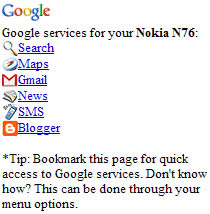
Why Care About Mobile Search?
Compared to web search users mobile search is still a relatively small universe. However the opportunity is significant. In September comScore Networks estimated there were slightly more than 2 billion global mobile users as opposed to a paltry 750 million Internet users. While in the United States only about 19% of mobile owners were using phones like Blackberries, Q’s, and Treos to access the Internet, it’s already much more popular in Europe. This likely portends the future here in the United States.
You can see that abroad populations accept and have adopted mobile Internet technology and the opportunity looms large here in the USA. Because we are still in the mobile-early-adopter age, search competition (even among SEM firm clients) is still relatively low creating palpable opportunities.
Mobile Google and Yahoo
74% of United States users, accessing the Internet through mobile, turn to major engines via the web for search on their phones. Therefore SEM firms will have access to the majority of the mobile audience through evolving options in the Google and Panama advertising platforms. It’s not just organic search hooking folks on their mobile phones. It’s ads.
We’re starting to see media buying options and opportunities in mobile marketing by way of traditional SEM ad placement channels. Right now the format is predominantly banners, text, and increasingly the major search engine players are going deeper. Yahoo is the biggest player in paid mobile advertising and Google is experimenting with limited availability to select test accounts. Google is testing voice based mobile catagory search (as part of free 411 services) to gather linguistic data from enough human voices to “teach” future voice command driven systems.
According to eMarketer it is estimated that by 2007 there will be 2.5 billion in mobile advertising spend. Piper Jaffrey, another leading analyst in the field, suggests that the total mobile spend will rise to 11 billion by 2011. m:metics reports that Google has about 4.75 mobile users, Yahoo 3.65, and Microsoft about 1 million. Google leads mobile worldwide with telcom deals in China India, Japan, and in Europe. Ask.com and other smaller players have mobile search capabilities which are not statistically significant as of yet.
Giddy Up in the Mobile Wild West
I’ve been accessing websites and search on “smart” phones since 2003 beginning with the first Sprint Hitachi offerings and following through generations of Treo 650, 700P/W, Blackberry, Q, etc… We test our clients’ sites on mobile but until we became proactive last year about offering site development in mobile format the results were not often pretty.
In many ways mobile search is at a stage much like the Internet was in 1996. Much ground can be gained by early adopters with foresight. However it is important to understand that there are applied design and technical challenges to traverse in the pathway from designer’s desk to mobile phone screen. The end result is that many current websites are not easy (or impossible) to navigate on mobile phones. For a shocker, take a look at your website on a Motorola Q or Palm Treo and tell me if you like what you see- or if it’s even usable at all. Ask yourself it that’s how you want your marketing to be perceived by the growing cadre of mobile Internet users.
Mobile is the same but Different.
Mobile search marketing is similar to traditional web marketing but there are critical differences. To begin handset manufacturers and network operators play much bigger roles in the delivery of content. Whereas Internet and Explorer and Firefox have comparable parsing standards, the mobile web is far from uniform in response when it comes to parsing your html content in to 2 inch square delivery. Â
Also mobile searchers have much different applied design needs and (at this point) seek clear categories of content to distinguish them from other web searchers. Therefore designers targeting the mobile platform must adapt their thinking for mobile usage. Design decisions as mundane as placing simple text navigation tools at the top and bottom of the screen take on new importance in the cell phone world.
Content managers need to become aware of mobile users’ interests who today skew towards travel, financial services, and sports. Verticals that mobile users access on a day to day basis are sure to increase along with penetration, so applying foresight to content we offer now from out websites specifically formatted for mobile search, certainly will pay dividends over time.









